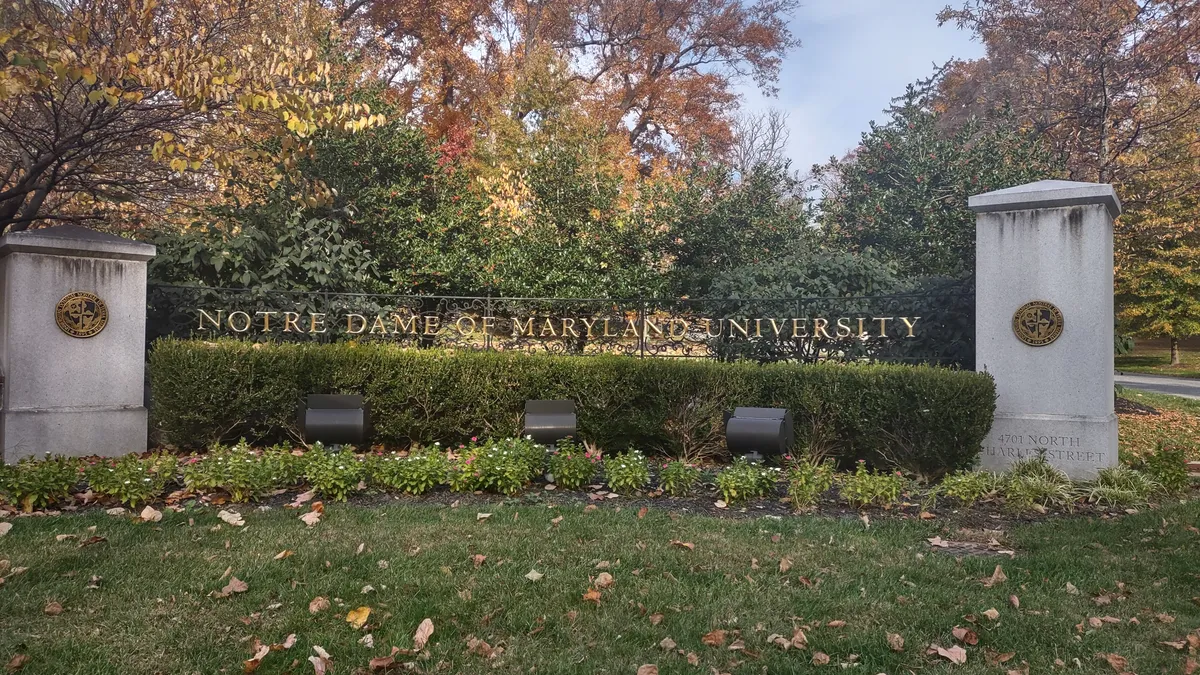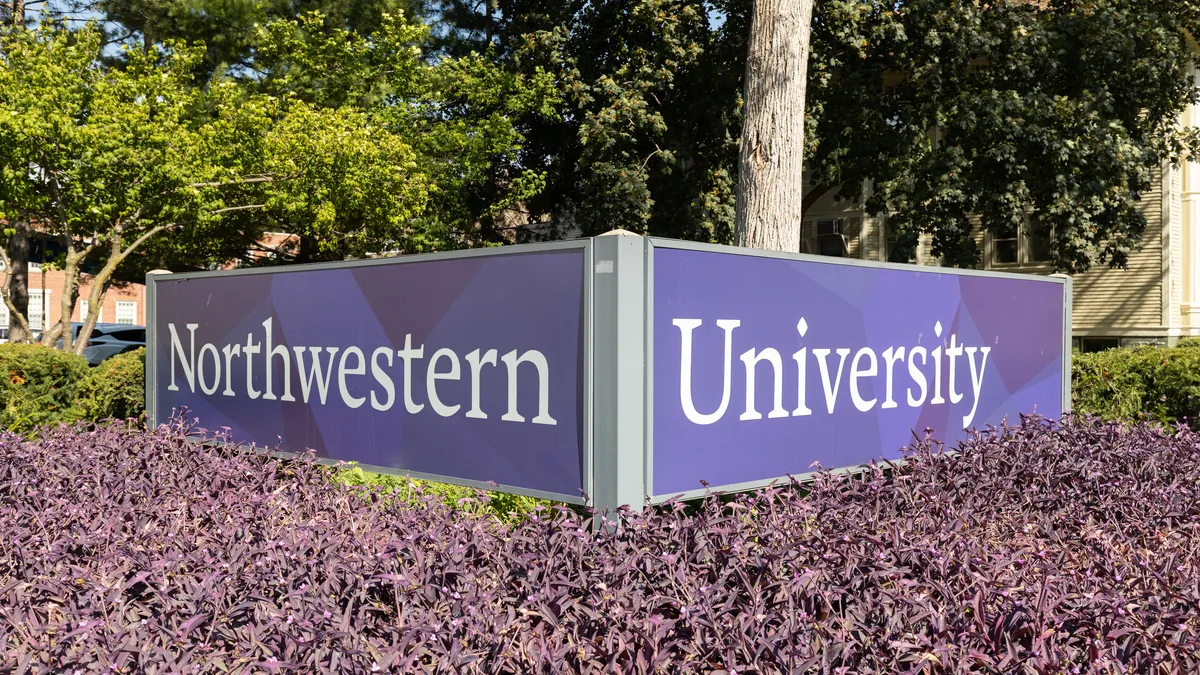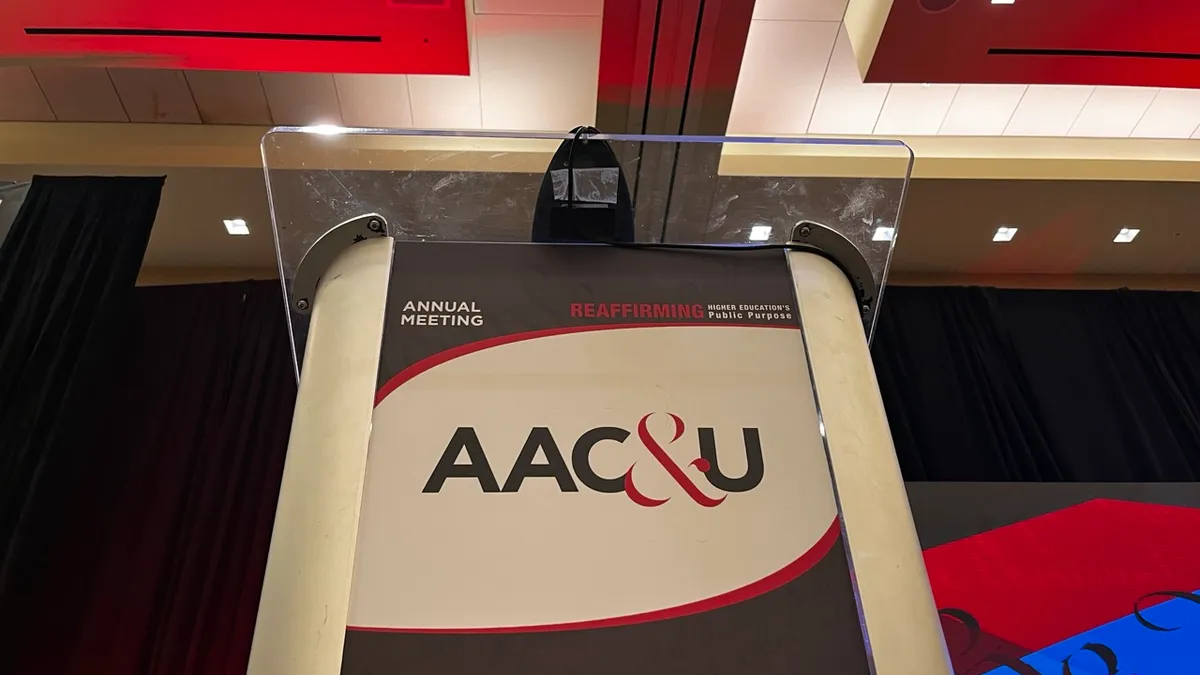In the 19th century, women’s colleges numbered in the hundreds. By 2014, there were only 42, according to federal data. In 2021, there were 35.
Some of those institutions closed entirely. Others became coeducational as single-sex postsecondary education collapsed starting in the 1960s.
Since the beginning of 2021, two other institutions have moved to take their names off the list of women's colleges.
Mills College, a private college in California, merged with Northeastern University last year to become a coeducational campus after declaring a financial emergency in 2017. Notre Dame of Maryland University announced just this September that it will be transitioning to coeducation and inviting men into its undergraduate program next year.
Many women’s colleges that consider coeducation are motivated by enrollment declines and accompanying financial troubles. Changing admissions criteria may help with those challenges, but the choice is not without its drawbacks. Coeducation often means a fundamental change in a college’s mission, and it’s one not everyone will be happy about.
Some feel the cost is worth the benefits.
“It’s been as successful as we had hoped and probably more so,” said Rhona Free, president of University of Saint Joseph, a private institution in Connecticut.
The college announced in 2017 that it would be admitting a coed undergraduate class the next year. Though administrators expected only about 50 men to enroll in the first term, about 100 did. Enrollment and retention of women went up as well. Housing occupancy increased from 61% to 94%.
“We’ve been operating at a surplus the last few years, and we’ve been able to use that surplus to make renovations to the campus that have been really needed to accommodate the increased enrollment,” Free said.
The university had been grappling with the beginnings of an enrollment decline due to falling numbers of high school graduates in the region, Free said. To recruit men effectively, administrators added majors, like computer science and exercise science, which they believed would appeal to the prospective students. Those majors have drawn more women as well, Free said.
“What made it a smooth process here was spending so much time speaking to alumni and our current students and faculty before the decision was made," Free said. "We tried to make it so everyone understood, if we did make the decision to become coeducational, why we were doing it.”
The shift has also provided more opportunities to University of Saint Joseph's female students, she said. Because of the increased enrollment, the university has been able to offer academic programs and extracurriculars that it couldn’t before.
Holdouts met by a new reality, or survivors finding ways to adapt?
Even after the long decline in single-sex education, representatives of women's colleges don't think recent changes reflect a challenge unique to women-only institutions.
The enrollment declines that University of Saint Joseph and similar colleges have experienced are part of a larger drop across American higher ed rather than specific to women-only institutions, said Emerald Archer, executive director of the Women’s College Coalition, an association founded in 1972.
“It’s part of the broader challenges that higher education is seeing," Archer said. "We don’t have low enrollment across the board."
Some women's colleges are boasting higher enrollment than they used to, she said.
“It’s part of the broader challenges that higher education is seeing."

Emerald Archer
Executive director, Women’s College Coalition
Going coed is a difficult decision of last resort, Archer said. College leaders want to keep their institutions' legacies alive but also have to weigh whether admitting more students will allow them to sustain themselves.
The Women’s College Coalition has been lobbying for specific federal support for the sector in part because of a trend of closures and institutions going coed.
“Women’s colleges make a lot of difference in the lives of students that we may not see in coeducational colleges,” Archer said. “Women’s colleges were made for women by women, largely. We are singularly focused on women’s advancement and ensuring that women are able to pursue the disciplines they desire.”
Change at some level may be necessary to survive, even if that doesn’t mean becoming coed. For example, institutions have changed the makeup of their undergraduate student bodies without becoming coeducational
Trinity Washington College, a women’s college in Washington, D.C., saw an enrollment decline in the 1980s, said Patricia McGuire, the institution’s president. The predominantly White and middle-class women who had made up the college’s student body until that point were no longer enrolling.
“The women of color who come to Trinity, they don’t mind that it’s a women’s college — in fact they love that it’s a women’s college.”

Patricia McGuire
President, Trinity Washington University
But in the 1990s and 2000s, Trinity decided to focus on women in the surrounding city, which changed its demographics significantly. Today, the institution, now called Trinity Washington University, has an undergraduate student body that is 55% Black or African American and 33% Hispanic or Latino, according to federal data. Just 2% of undergraduates are White.
“The women of color who come to Trinity, they don’t mind that it's a women’s college — in fact they love that it’s a women’s college,” McGuire said. “But they come because we have nursing and business and psychology and programs that will connect them directly to career pathways when they leave here.”
Women’s colleges that do choose to pursue coeducation may diminish their missions, McGuire said. With some state legislatures seeking to limit women's rights and other signal that women’s place in the U.S. is not advancing, these institutions still offer a place to empower young female students.
Difficult transitions
Colleges that pursue coeducation will also likely face backlash, although how much can depend on the specific case.
When Mills College first tried to transition to a coed institution in 1990, it drew strong opposition, including a student strike. It became the first women’s college to reverse a commitment to admit men.
A group of alumni from Notre Dame of Maryland University is trying to make their institution the second on that list.
Kristi Halford, a communications and public relations consultant, is an alumna who is part of that effort. Halford was president of the Alumnae and Alumni Executive Board for two years and stayed involved with the institution since. She said alumni and donors were blindsided by the decision to transition to coeducation, which she believes is the wrong one for the college.
“Not only were alumni and students left out of the loop, but faculty were as well,” Halford said. “I don’t believe that coed is the right decision, but had the due diligence and research been done and it was presented logically that this is the solution, we probably would all be interested in doing the very best we can for Notre Dame, because it means that much to us.”
The campaign has involved several letters published in The Baltimore Sun. The American Association of University Professors chapter at the university, tenured faculty, and individual alumni have also sent letters to the university's administration opposing the decision.
Patricia J. Mitchell, alumna and former trustee board chair at Notre Dame of Maryland University, wrote a letter to the board arguing that coeducation is a “solution in search of a problem.”
The university’s enrollment has declined more than 20% since 2015, she wrote. Retention, graduation and the institution’s spot on popular college rankings have also taken hits.
“Why should any of the outcomes and key performance indicators be different if men are admitted to the Women’s College when the fundamental issues and lack of competitiveness (rankings, retention/persistence, and graduation rates) have not been reviewed or addressed?” Mitchell wrote in the letter.
Halford said she believes Notre Dame of Maryland University has the power to mentor young women for leadership roles. She expects the university to suffer as a result of the decision and how the process was conducted.
“I think that from a fundraising perspective that this is going to hurt them dramatically,” Halford said. Donors and alumni "have been giving to the university because they believe in a women’s college experience and sustaining that experience for generations to come.”
A Notre Dame of Maryland spokesperson pointed to public statements and FAQ documents when asked for comment.
“Less than 2 percent of female freshmen enroll in private, women’s colleges and universities every year,” the university wrote in its FAQ document. “In order for NDMU to flourish for years to come, we needed to expand our mission to admit women and men who want a co-ed college experience.”




















